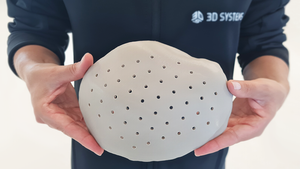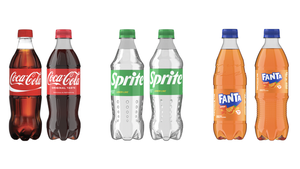Eastman’s Naia Renew portfolio, sourced from 60% wood pulp and 40% recycled waste plastics, is described as an eco-friendly alternative to viscose, the third most-used textile fiber in the world.
October 1, 2020

Eastman introduced this week its new Naia Renew portfolio, sourced from 60% wood pulp and 40% recycled waste plastics. Naia Renew cellulosic fiber is traceable with certified biodegradability that captures the value of hard-to-recycle materials that would otherwise be destined for landfills. It can be produced at scale to deliver sustainability without compromise to the fashion world, said Eastman.
Eastman is targeting 170 million metric tons of plastic material currently being sent to landfills or incineration. “Naia Renew enables a circular economy for the fashion industry and helps brands meet their eco-conscious goals,” said Ruth Farrell, Global Marketing Director of Textiles for Eastman, during an online press conference on Sept. 29. “We’re transforming what fabric can be and do to meet the sustainability demands of our customers and to create a world where brands and consumers can be in fashion without compromising on quality and performance.”
Naia Renew is an eco-friendly alternative to viscose, noted Farrell in her introduction. Viscose, aka rayon, is the third most-used textile fiber in the world, according to a science paper on nanoforestry from Purdue University. Semi-synthetic viscose is a durable alternative to silk. Farrell noted that viscose is responsible for the illegal logging of more than 150 million trees annually needed to make the material.
Available as both a filament and staple fiber, Naia Renew offers clear advantages over other materials, said Eastman. Naia Renew filament has a silky hand, rich luster, and fluid drape, and is used to create fashionable women’s garments. Naia Renew staple fiber is inherently soft and quick drying with reduced pilling properties, making it ideal for everyday casual wear, according to Eastman.
Fully circular, Naia Renew is produced with a low carbon footprint in a closed-loop process, where solvents are safely recycled back into the system for reuse. The fiber is made from wood pulp sourced from certified forests, and the recycled plastics feedstock is generated via Eastman’s patented carbon renewal technology (CRT). CRT is an integrated, molecular recycling technology that breaks down waste plastics, such as post-consumer carpet fiber and plastic packaging materials, into basic molecular building blocks for the manufacture of new products, including fibers.
“Our vision is to make sustainable fashion accessible for everyone,” Farrell added. “We all need to play our part to help fix the future and work together to protect our planet’s precious resources for the next generations. With Naia Renew, brands can take an active role in conserving resources and fostering innovation, while demonstrating a passion for sustainability that resonates with consumers worldwide.”
About the Author(s)
You May Also Like




